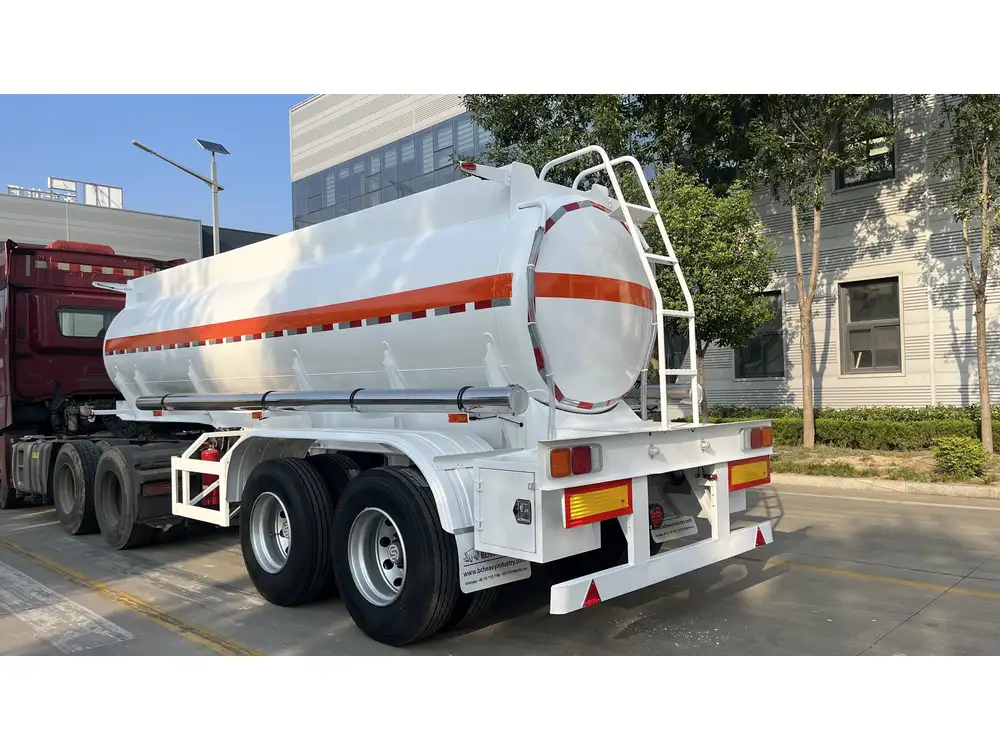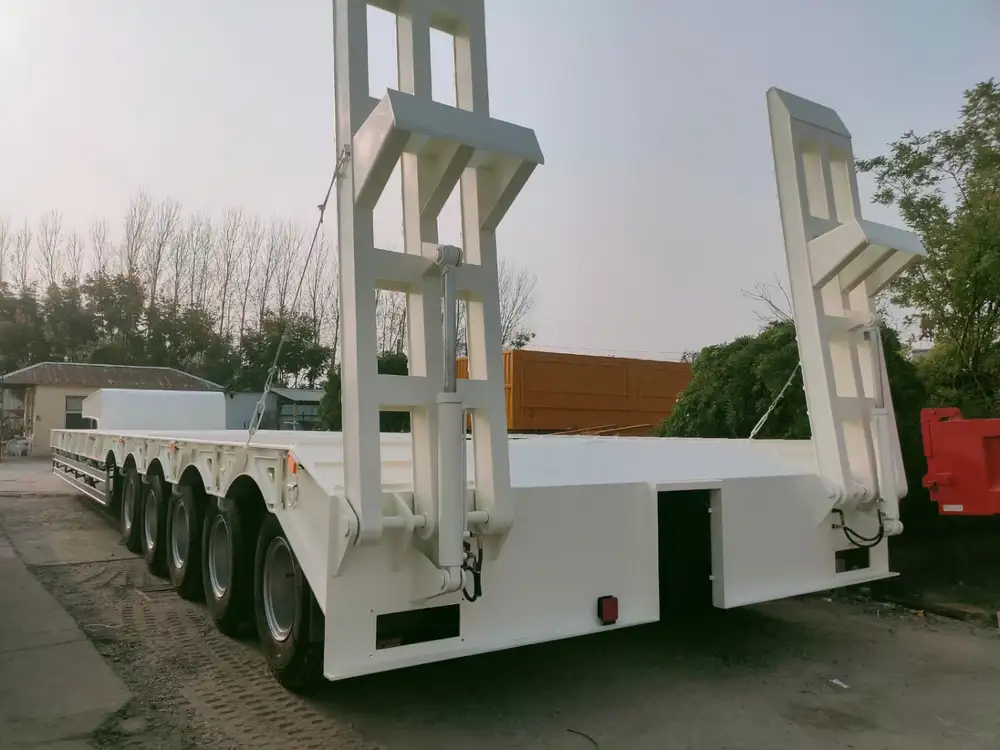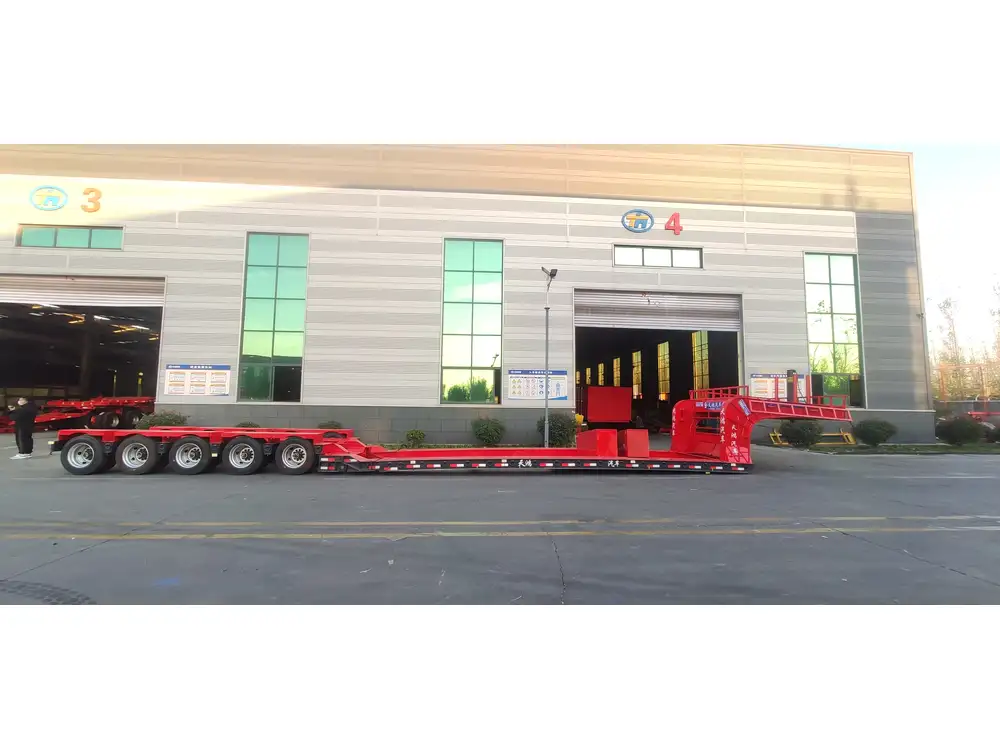In today’s rapidly evolving logistics landscape, securing container trailers is crucial for both safety and efficiency. As manufacturers of semi-trailers, we understand the paramount importance of understanding how container trailer locks function. This knowledge is not merely academic; it’s practical in enhancing security measures against theft and ensuring safe transport.
The Anatomy of Container Trailer Locks
Container trailer locks come in various designs, each tailored for specific security needs. Here’s a breakdown of the most common types of locks utilized in container trailers:
| Lock Type | Description | Pros | Cons |
|---|---|---|---|
| Padlocks | Standard locks that can be used with hasps or integral clips on containers. | Portable and versatile. | Easily cut or picked. |
| Locking Bars | Crossbars that secure container doors. | Heavy-duty and robust. | Installation can be tricky. |
| Bolt Locks | Mechanically secured locks that engage bolts into the frame of the container. | Provides solid locking. | Requires a sturdy frame. |
| Electronic Locks | Keypad or RFID entry systems that control access digitally. | Modern and highly secure. | Dependent on battery life. |
| Disk Locks | Disc-shaped locks that are designed to resist cutting and picking. | Very hard to tamper with. | Can be expensive. |
By understanding the characteristics and applications of various locking mechanisms, logistics companies can make informed decisions to safeguard their assets.
How Do These Locks Operate?
Container trailer locks typically operate on mechanical principles, relying on various mechanisms to ensure the security of the trailer. Here’s an exploration of the fundamental workings:

1. Mechanical Locks (Padlocks & Bolt Locks)
Mechanical locks utilize a key or combination to disengage internal components. When the right key or combination is used, pins or tumblers align, allowing the lock to open.
- Operation:
- The key is inserted into the lock.
- Turning the key raises the tumbler pins.
- When aligned, these pins free the lock cylinder, enabling rotation and thus, opening the lock.
2. Locking Bars and Crossbars
These are primarily used to secure the container’s doors. When engaged, they brace against the door and prevent it from being opened unless the locking mechanism is disengaged.
- Operation:
- The bar is placed across the door handles.
- A lock or pin holds the bar in place.
- Removing the lock or pin allows the bar to pivot, thus unlocking the doors.
3. Electronic Locks
Electronic container locks add an advanced layer of security. Using sensors and digital interfaces, these locks require an access code or card to disengage.
- Operation:
- The user inputs a code or scans an RFID card.
- The electronic unit processes the input against stored credentials.
- If validated, motors disengage the lock mechanism, allowing the door to open.

4. Disk Locks
Designed with a unique shape, disk locks are harder to pick or cut. Their locking mechanism is more robust due to multiple pins working independently.
- Operation:
- The key is inserted into the lock.
- Rotating the key moves several internal disks.
- Once aligned, these disks release the locking mechanism.
The Importance of Security Features
Choosing the right lock for a container trailer involves considering several features that enhance security. Here are some critical aspects to evaluate:
A. Durability and Resistance
Locks should withstand various environmental conditions, including moisture, rust, and temperature fluctuations. Materials like hardened steel or stainless steel are often recommended for their ability to resist cutting and corrosion.

B. Pick and Drill Resistance
Many container locks incorporate mechanisms that resist picking and drilling. Features such as anti-drill plates, shrouded or concealed shanks, and complex internal pin designs can thwart unauthorized access attempts.
C. Ease of Use
While security is critical, locks must also be user-friendly. Easy to operate locks without compromising security enhance efficiency during loading and unloading operations.
D. Integration with Security Systems
Contemporary locks may integrate with broader security systems, including alarms and tracking devices. This compatibility provides additional layers of protection through monitoring and alerts.

Common Security Challenges and Solutions
Despite sophisticated locking mechanisms, container trailers face various security challenges. Here, we dissect the prevalent issues and offer solutions.
Challenge 1: Theft or Tampering
A common concern is unauthorized access, leading to theft of cargo. Thieves often target containers in transit or parked in low-security areas.
Solution:
Utilize high-grade locks known for their resistance to tampering. Additionally, deploying GPS tracking systems can enhance accountability. This technology helps monitor trailer movement, allowing for quick response to suspicious activity.

Challenge 2: Environmental Damage
Containers often face exposure to harsh weather, which can degrade lock functionality over time.
Solution:
Invest in weather-resistant lock designs, and employ preventive maintenance to ensure locking mechanisms remain functional. Regular inspections can catch early signs of wear or damage.
Challenge 3: Key or Access Card Loss
Misplacing keys or losing access cards can pose significant challenges, potentially leaving trailers vulnerable or immobilized.

Solution:
Consider keyless entry systems, which negate the risk of losing physical keys. Biometric systems, such as fingerprint scanners, add an extra layer of security.
Best Practices for Securing Container Trailers
Conduct Regular Inspections
- Regularly check locks for functionality and wear. Replace any compromised or damaged components immediately.
Educate Personnel
- Train employees on proper locking procedures and the importance of security measures. Awareness can prevent negligence leading to security breaches.
Optimize Loading Procedures
- Establish secure loading and unloading protocols. Employees must lock containers immediately after loading to reduce exposure time.
Utilize Security Markings
- Mark trailers with visible security features and company logos. This discourages theft by increasing the risk of identification.
Advantages of Secure Container Trailers
Investing in high-quality trailer locks and security processes brings myriad benefits, including:
- Reduced Theft Incidents: Advanced locking mechanisms minimize the chance of unauthorized access.
- Insurance Benefits: Insurers may offer reduced premiums for vehicles equipped with reliable security features.
- Operational Continuity: Minimizing theft and tampering ensures that operations proceed smoothly, avoiding costly delays.

Conclusion
Understanding how container trailer locks work and implementing the right security measures can safeguard valuable assets throughout the supply chain. As manufacturers, it’s imperative to commit to enhancing security features on our semi-trailer products. By addressing prevalent issues and investing in robust locking mechanisms, we ensure not only the safety of goods but also the integrity and reputation of our logistics operations.
In a world where the threat of theft and damage looms, prioritizing trailer security must remain at the forefront of operational strategies. Whether through mechanical locks, electronic solutions, or bespoke innovations, ensuring the security of container trailers is no longer a matter of choice—it’s a necessity.



